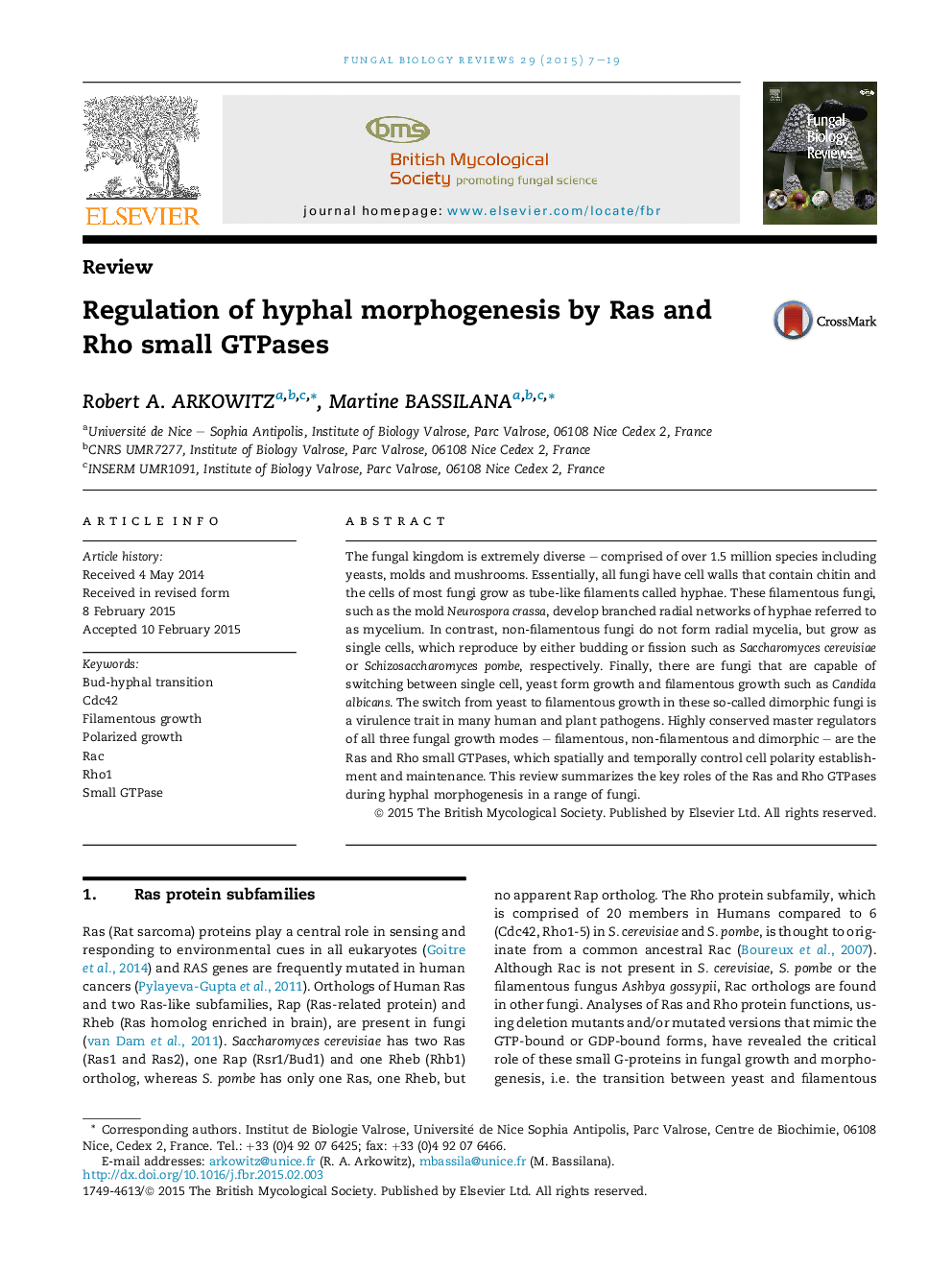| Article ID | Journal | Published Year | Pages | File Type |
|---|---|---|---|---|
| 2180482 | Fungal Biology Reviews | 2015 | 13 Pages |
•Ras, Rho, Cdc42 and Rac G-proteins have been examined in diverse fungi.•These Ras superfamily GTPases have distinct roles in fungal filamentous growth.•The localization of Ras, Rho, Cdc42 and Rac G-proteins differs during hyphal growth.
The fungal kingdom is extremely diverse – comprised of over 1.5 million species including yeasts, molds and mushrooms. Essentially, all fungi have cell walls that contain chitin and the cells of most fungi grow as tube-like filaments called hyphae. These filamentous fungi, such as the mold Neurospora crassa, develop branched radial networks of hyphae referred to as mycelium. In contrast, non-filamentous fungi do not form radial mycelia, but grow as single cells, which reproduce by either budding or fission such as Saccharomyces cerevisiae or Schizosaccharomyces pombe, respectively. Finally, there are fungi that are capable of switching between single cell, yeast form growth and filamentous growth such as Candida albicans. The switch from yeast to filamentous growth in these so-called dimorphic fungi is a virulence trait in many human and plant pathogens. Highly conserved master regulators of all three fungal growth modes – filamentous, non-filamentous and dimorphic – are the Ras and Rho small GTPases, which spatially and temporally control cell polarity establishment and maintenance. This review summarizes the key roles of the Ras and Rho GTPases during hyphal morphogenesis in a range of fungi.
